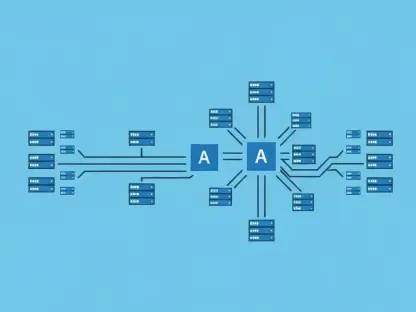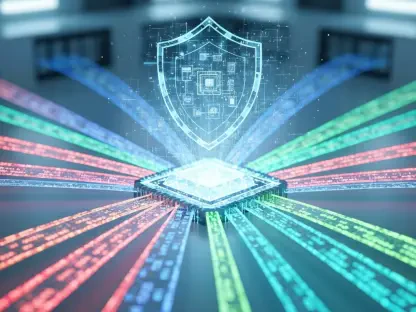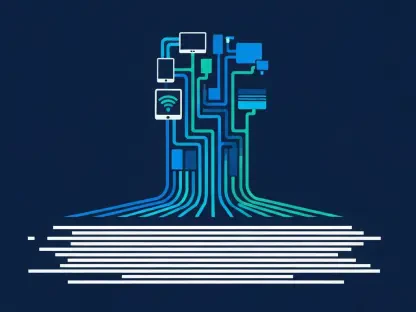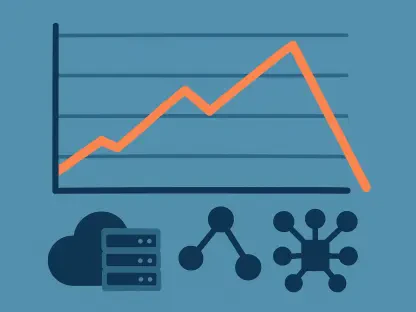Listen to the Article
Cyberthreats are evolving at a fast pace. This rapid evolution prompts businesses to protect their digital assets while maintaining the speed of software development. The stakes are high for B2B organizations because a single breach can lead to severe financial losses and regulatory penalties. Equally, having poor security has lasting reputational outcomes.
As hybrid work models and complex device ecosystems gain popularity, organizations should prioritize protecting operational systems in the boardroom. This article explores the importance of development, security, and operations in business and addresses how organizations can keep their software future-ready.
The Value of Software Protection in the B2B Environment and How to Start
Cybersecurity is not a siloed discipline. It exists as part of an interconnected digital ecosystem, where APIs and multiple endpoints intertwine to impact entire businesses. Due to this digitization, traditional perimeter-based security approaches tend to fall short. That’s where development, security, and operations come in. This approach addresses legacy shortfalls by shifting security left to solve software vulnerabilities early.
Shift Left: Embed Security in the Software Lifecycle
Development, security, and operations rely on proactive action. It involves identifying and mitigating risks from the beginning of the software development lifecycle. Shift left security ensures that companies deploy protective measures before attacks reach production environments, improving system efficiency. Integrating security in the planning and design stages enables enterprises to reduce costly rework, improve software dependability, and speed up delivery timelines.
A shift in security enables organizations to instill protective measures at every stage of the development process—from initial design to deployment and maintenance. At the same time, integrating the development, security, and operations framework into businesses transforms operational bottlenecks into a competitive advantage.
When security is built into your software lifecycle, it promotes cross-department collaboration and transparency. This visibility lowers the effort and intricacy of fixing exposure issues at the final stages of the development process. Incorporating security into systems also enhances compliance and establishes customer trust. Ultimately, aligning protective measures with business objectives drives resilience and innovations.
The most important way to secure software is to keep a complete and detailed record of digital assets, such as APIs and cloud applications. If visibility is not well-defined, blind spots can appear that allow attackers to find and exploit the vulnerabilities in your system.
Streamline Operations Through Automation and Integration
Modern cyber threats are fast and sophisticated, so defenses must be too. One of the defining components of effective development, security, and operations implementation is the use of automation to handle routine security tasks. It enables real-time detection and response with minimal human intervention.
At the same time, AI and machine learning technologies have become pivotal in endpoint security. Organizations use these systems to identify anomalies, stop threats in real time, and reduce false positives. This is particularly valuable in B2B environments, where managing thousands of endpoints manually is impractical.
Businesses also use automation discovery, which involves the use of AI and computational logic to automate entire software development lifecycles. It essentially pulls data from different organizational applications that are responsible for executing critical functions from the beginning of development.
With automation, companies can retrieve and analyze data to identify system patterns and enable constant asset mapping. These AI technologies help security teams streamline operations and allocate resources to areas with the highest data sensitivity. Advanced solutions enable business continuity by protecting critical operations from the beginning of development.
Embrace Single Security Platforms
The shift toward unified security platforms is another transformative trend. It enables organizations to consolidate endpoint detection and response with broader monitoring tools. Integrating endpoint protection with centralized dashboards gives enterprises a holistic view of their entire attack surface. This capability is crucial for hybrid teams that rely on a combination of personal and corporate devices. Consolidated systems reduce operational complexity and costs, which empowers businesses to improve their incident response times.
Endpoint Security Implications in a Hybrid World
Laptops, smartphones, and IoT devices now serve as entry points into corporate networks, expanding the attack surface exponentially. As hybrid and remote workforces become the norm, endpoint security emerges as a central pillar of enterprise cybersecurity. Endpoint protection strategies must account for the use of diverse devices.
By using software solutions that include device management policies and automated patching, management teams can protect attack surfaces against malicious actors. It is helpful for company systems to facilitate real-time behavioral analytics to catch suspicious activity before it escalates.
At the same time, protecting endpoints is not just about technology; it also involves human factors. It is about monitoring user behavior, training, and enforcing policies to secure company interactions. Endpoint protection requires continuous staff education. It equally necessitates strong access controls, regular audits, software updates, incident response plans, and aligning security practices with organizational goals.
Securing operational systems enhances customer trust and protects intellectual property. It also ensures regulatory compliance, which is essential in B2B industries such as finance, healthcare, and manufacturing.
Prepare for Tomorrow: Quantum Readiness and Beyond
Looking ahead, emerging technologies like quantum computing opportunities could eventually disrupt widely used algorithms, leaving current endpoint security models vulnerable. This can be a significant threat to development for industries that rely on secure data, including insurance and finance.
Forward-thinking organizations are already taking steps to become quantum-ready, not to fall behind when the shift happens. In their efforts, organizations conduct cryptographic risk assessments and begin the transition to quantum-safe protocols. This kind of long-term planning ensures that today’s investments in cybersecurity remain effective in a rapidly changing digital environment.
Create a Culture of Shared Responsibility
Technological readiness alone is not enough to stay competitive. A resilient security framework depends on cross-functional collaboration among developers, security professionals, and operations teams. Development, security, and operations create this culture by encouraging shared responsibility and continuous communication.
As cyber threats grow more sophisticated and costly, the time for proactive integration is now. Business leaders can build a security framework that not only protects but also propels the organization forward by embracing development, security, and operations into their systems. However, moving beyond this integration to employee acceptance and support is integral to business success.
To implement technological changes successfully, leaders must encourage a culture of shared responsibility. This shift involves prioritizing security education, providing the right tools, and incentivizing secure coding practices. When the organizational community—from product managers to front-end developers—understands their role in protecting digital assets, organizations move from reactive defense to proactive resilience.
Conclusion: Turn Your Security into a Strategic Asset
Cybersecurity is no longer just a defensive necessity; it is a strategic business enabler. Integrating development, security, and operations provides a way for businesses to enhance their protection while maintaining agility and innovation. From embedding security early in the development lifecycle to leveraging AI, automation, and quantum readiness, these strategies equip B2B organizations to address both current and future threats.
The broader takeaway is that security strategies must evolve to keep up with digitization. By anticipating attackers, businesses build a foundation for resilience. Organizations that wait for threats to materialize before they act are already too late.









